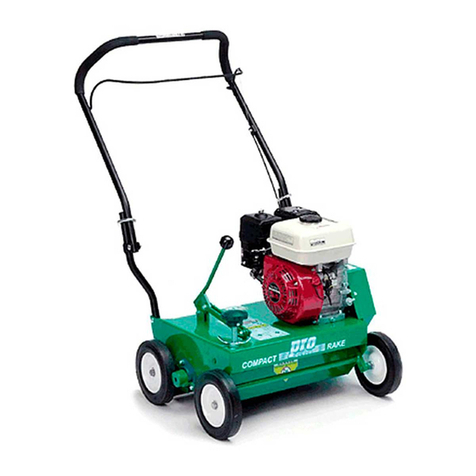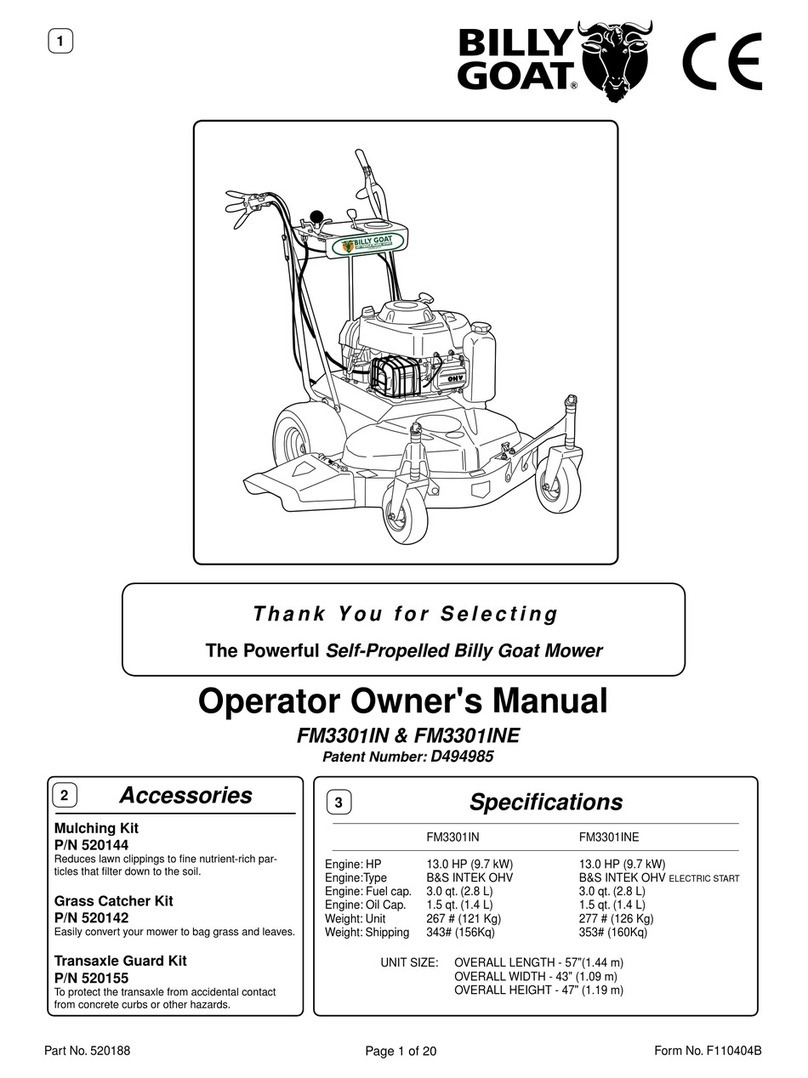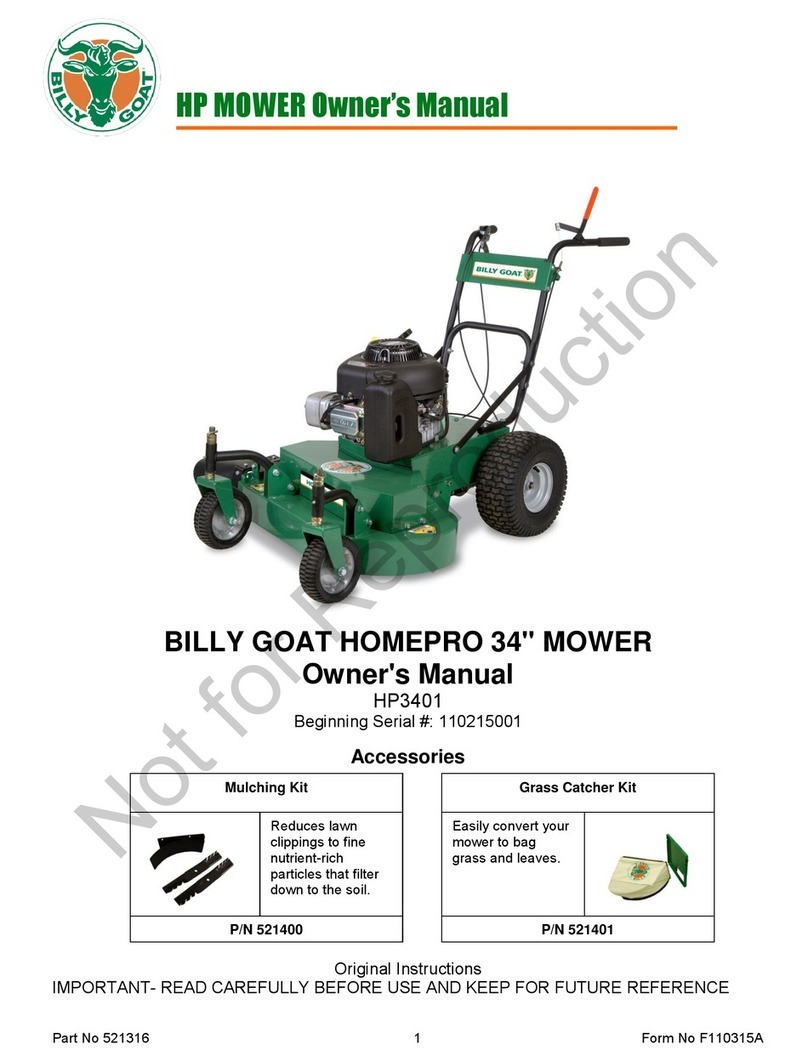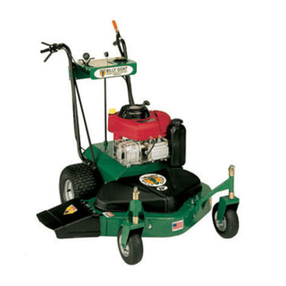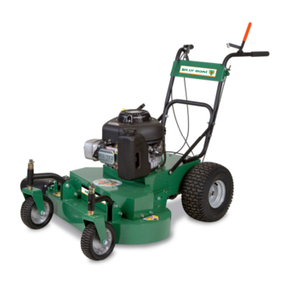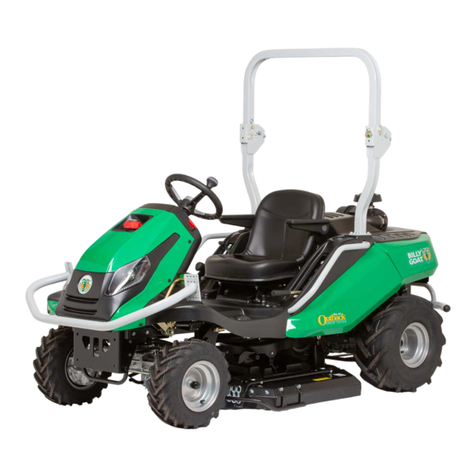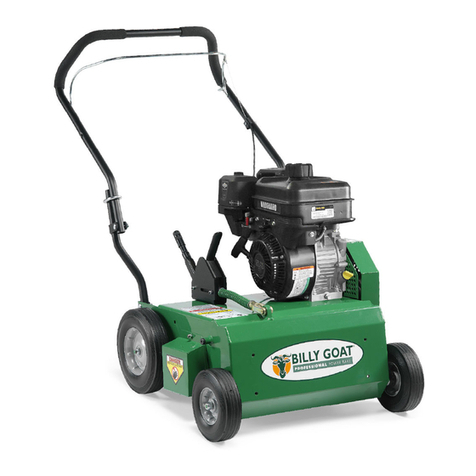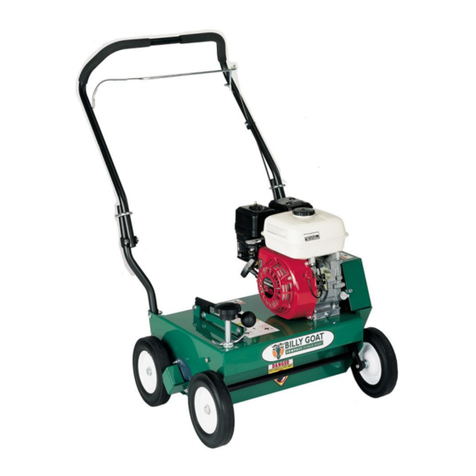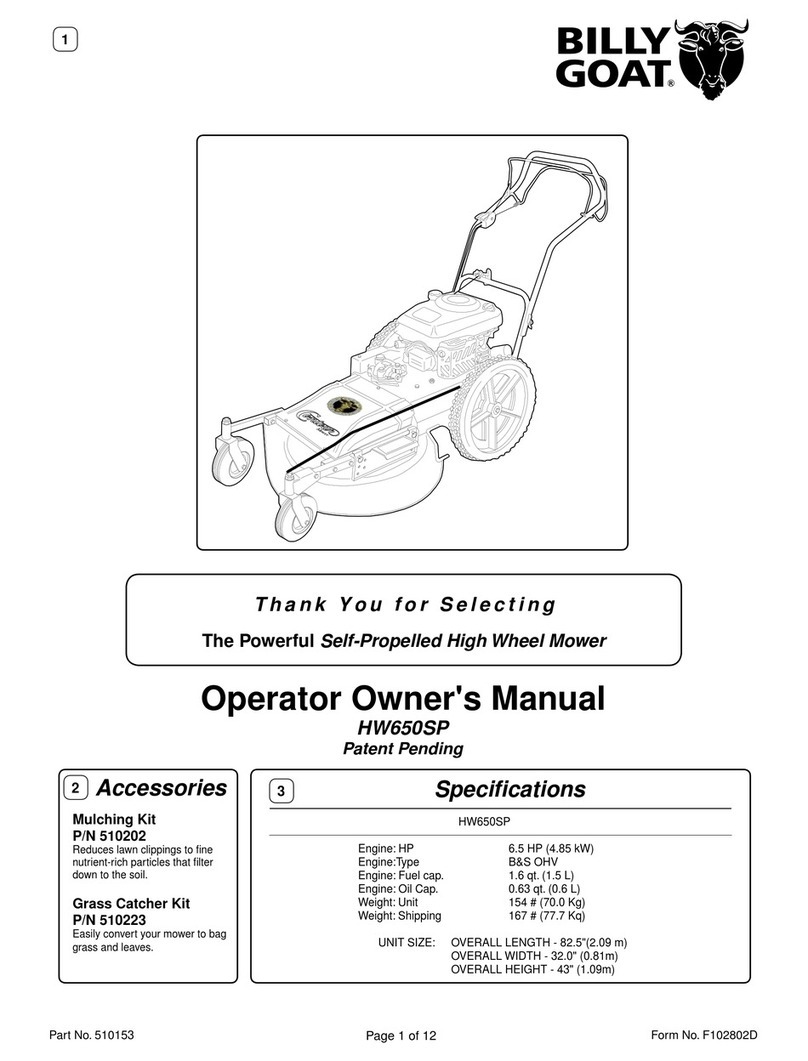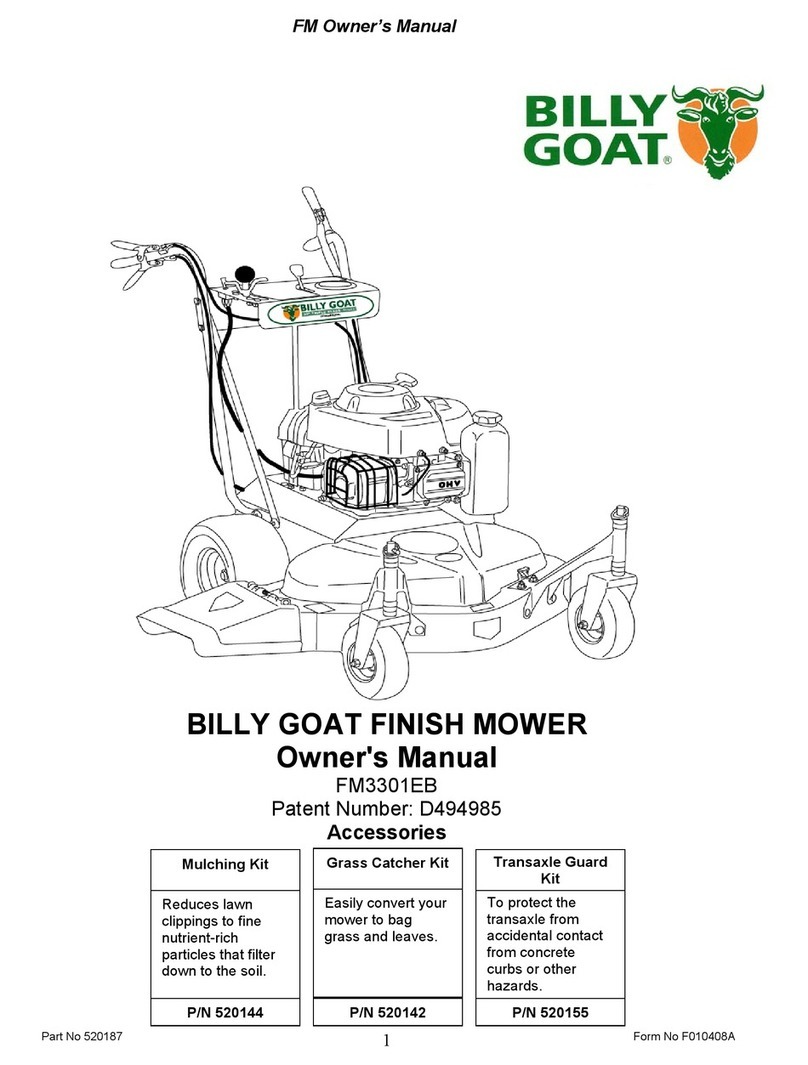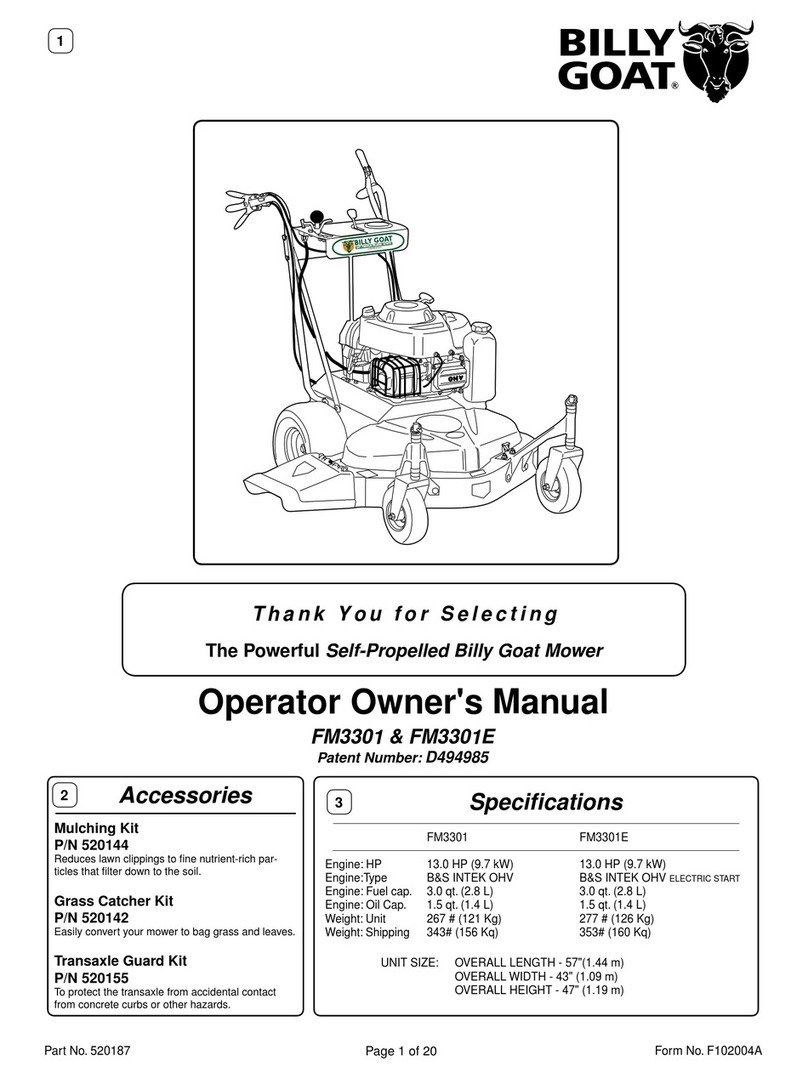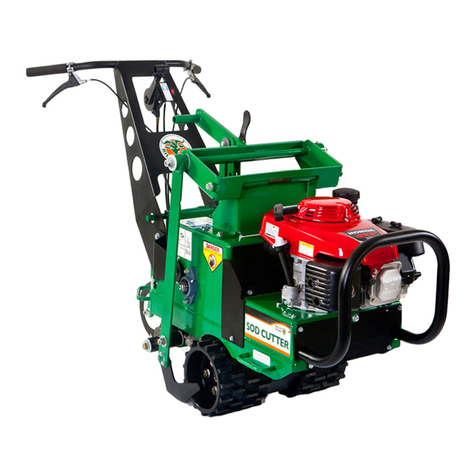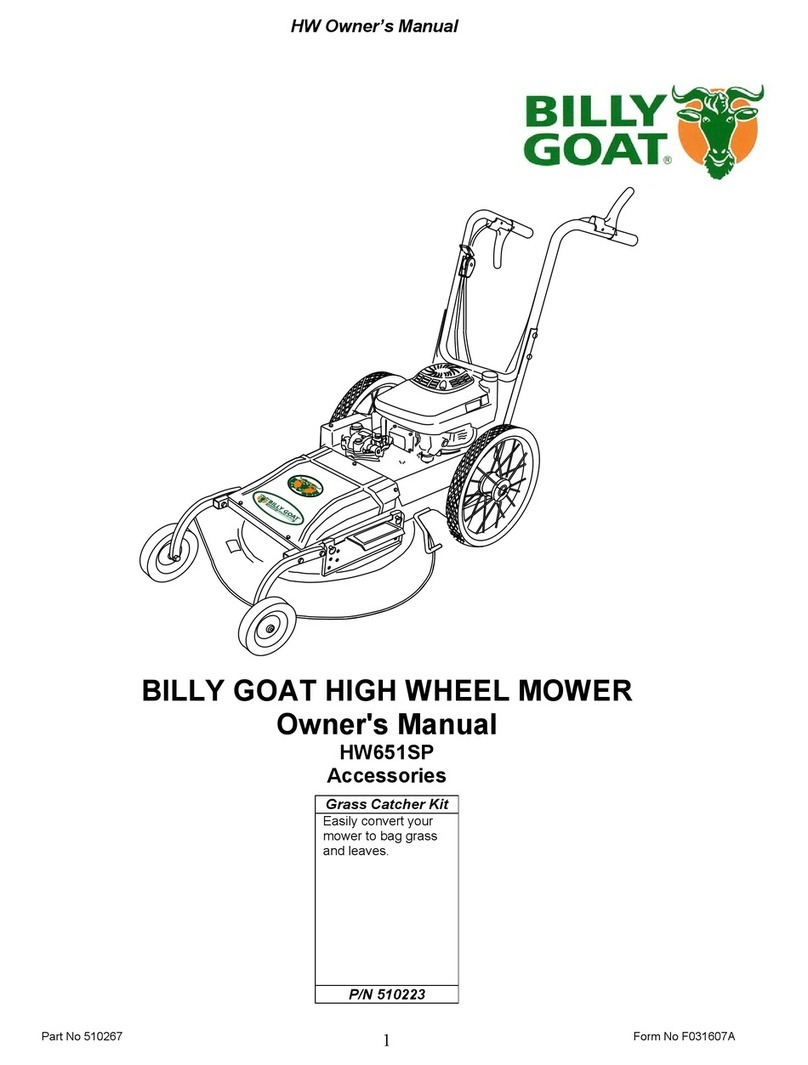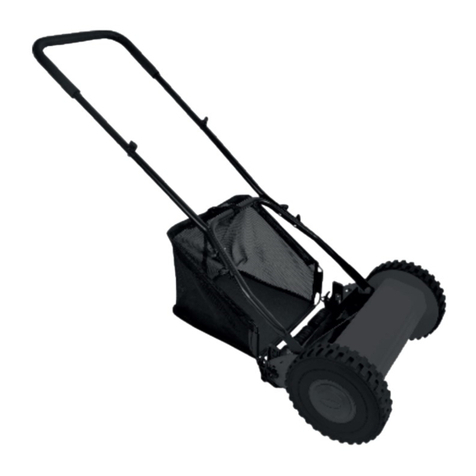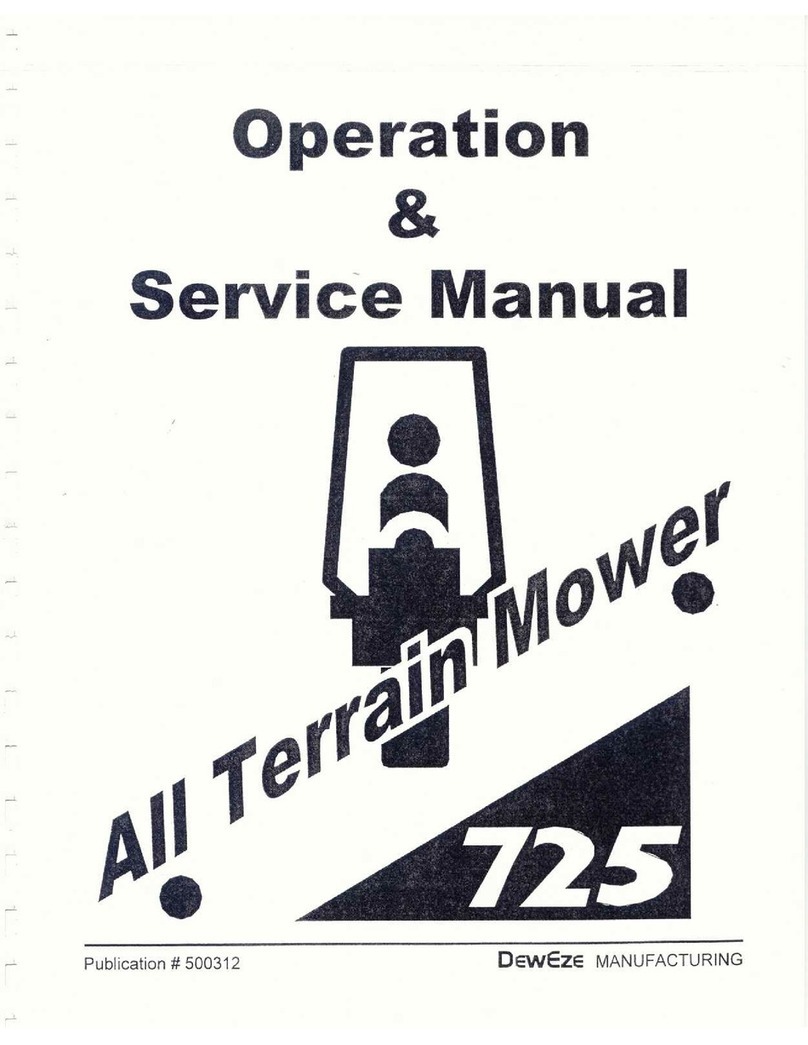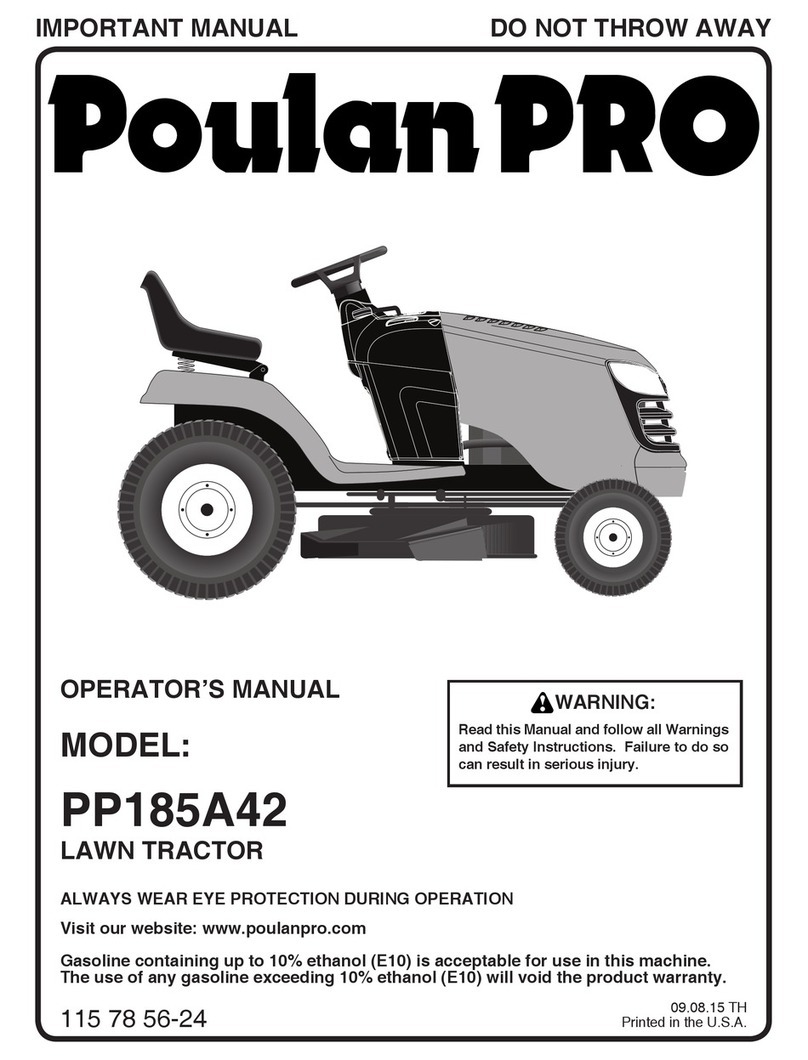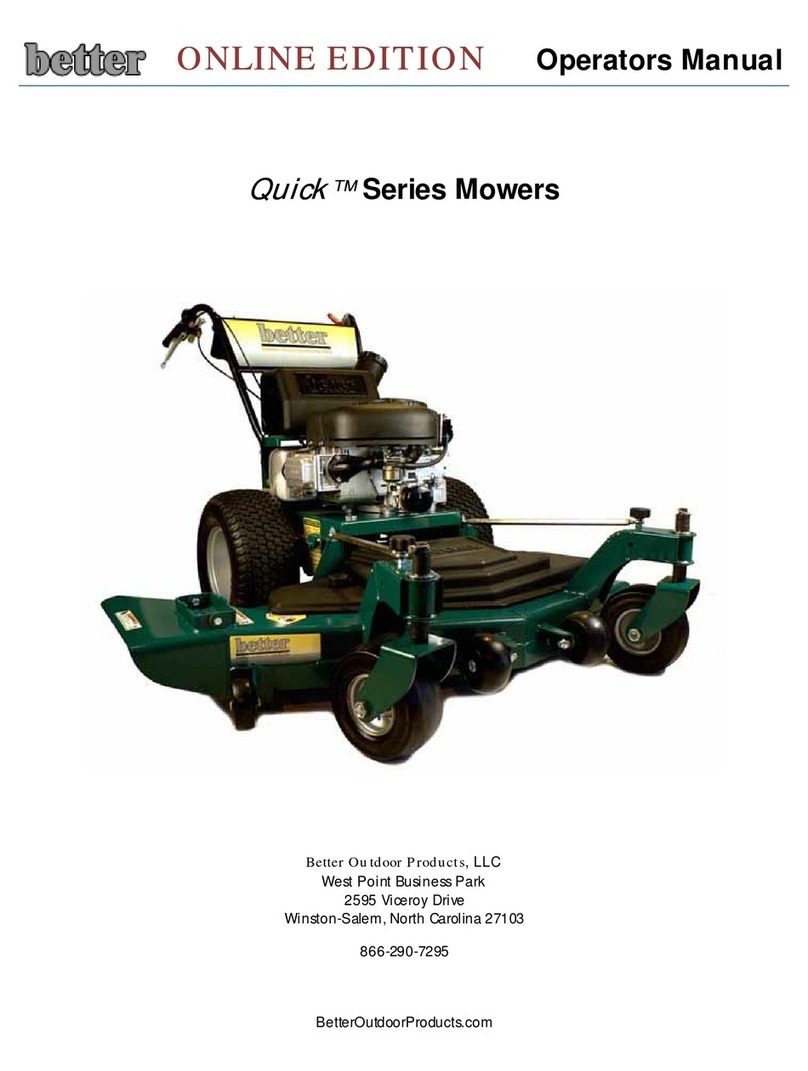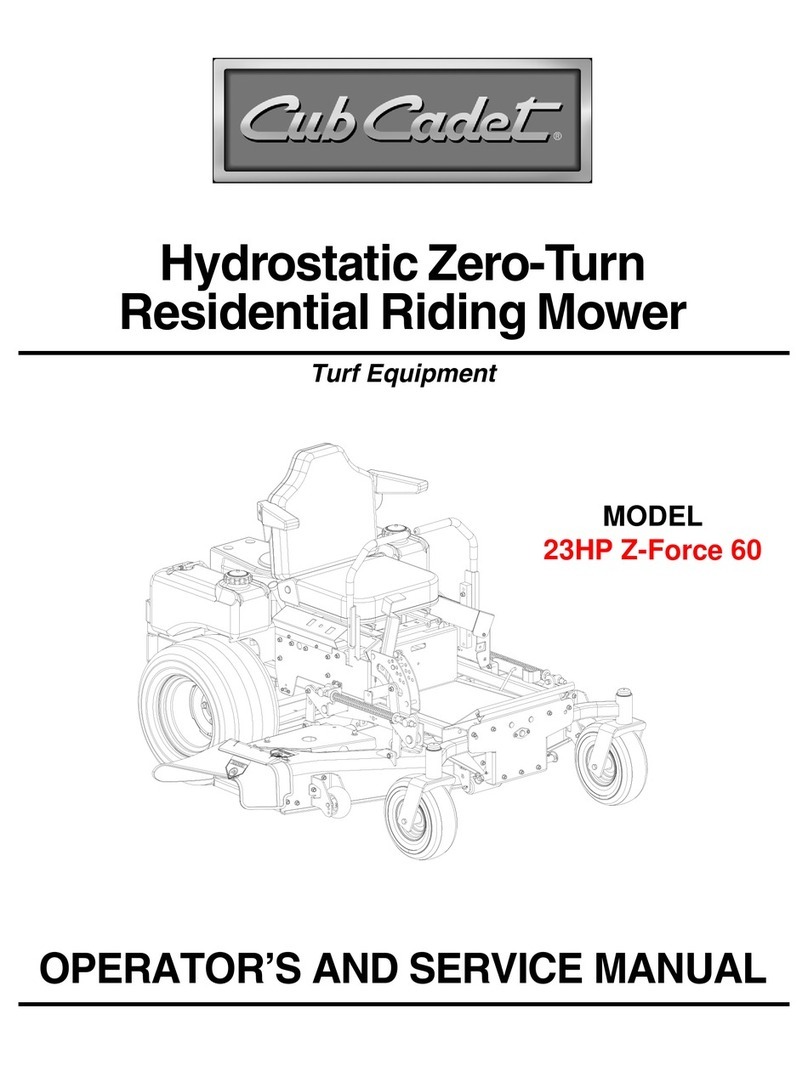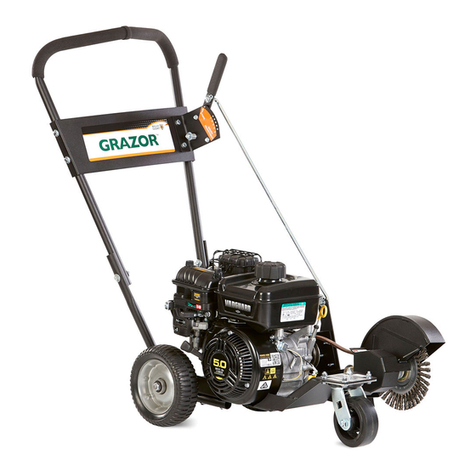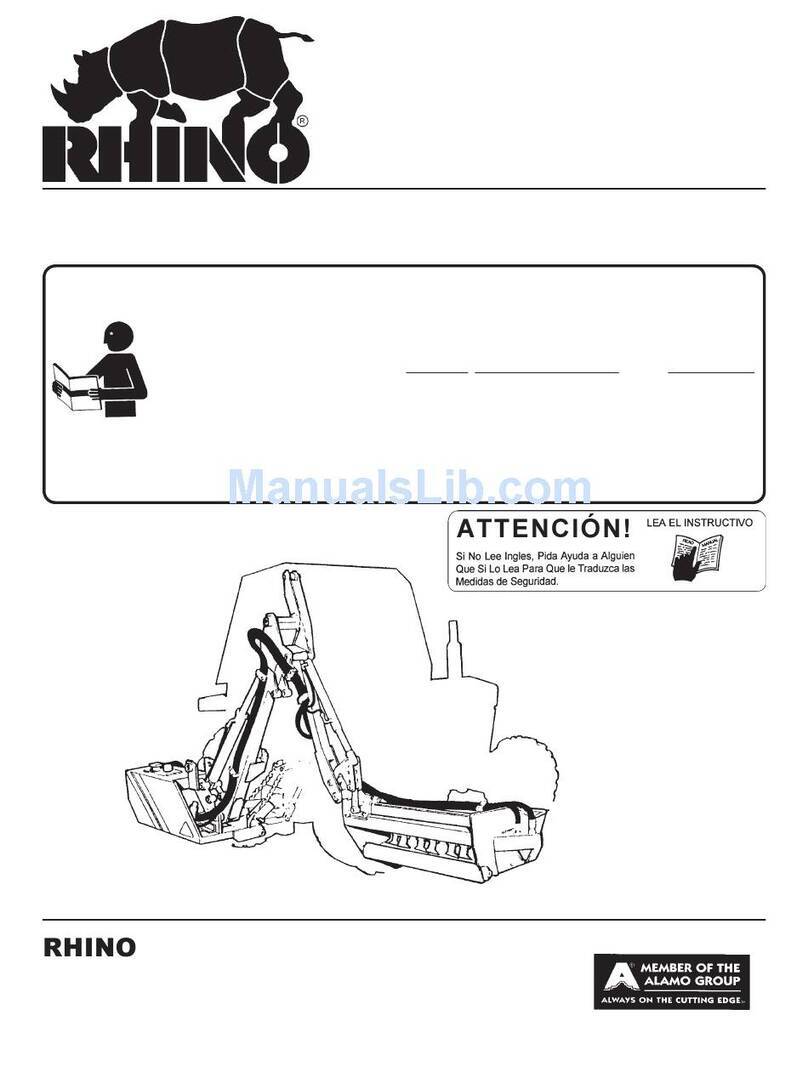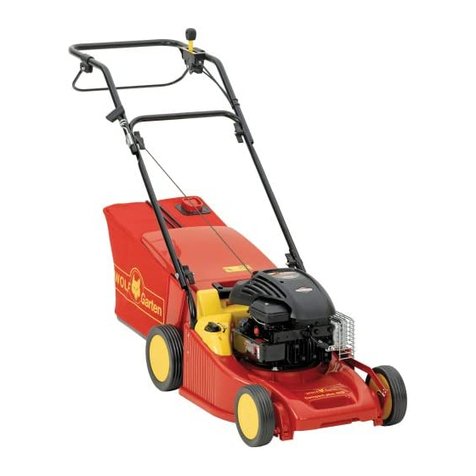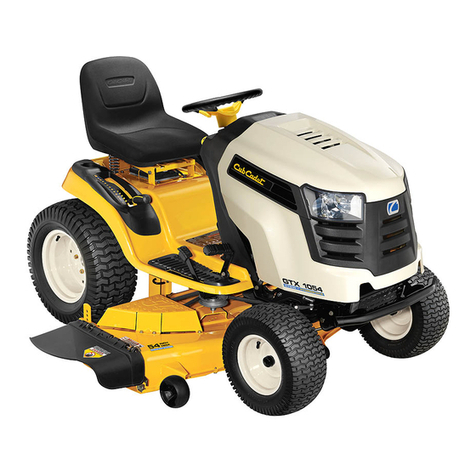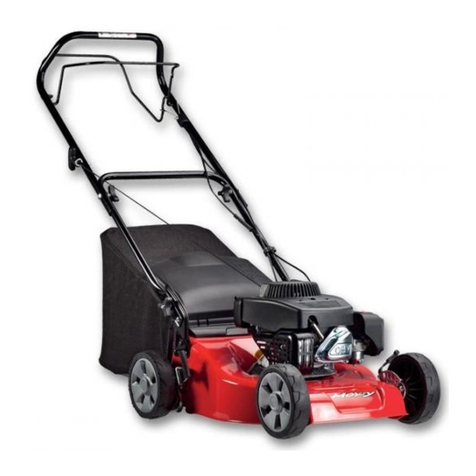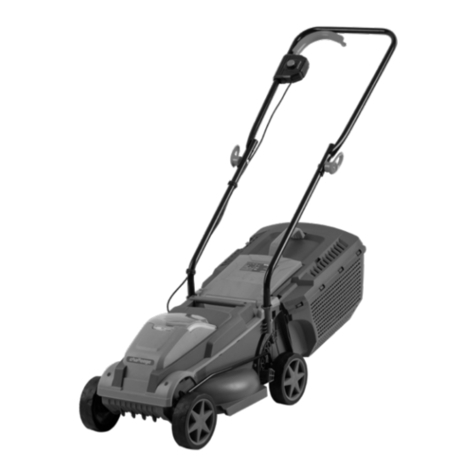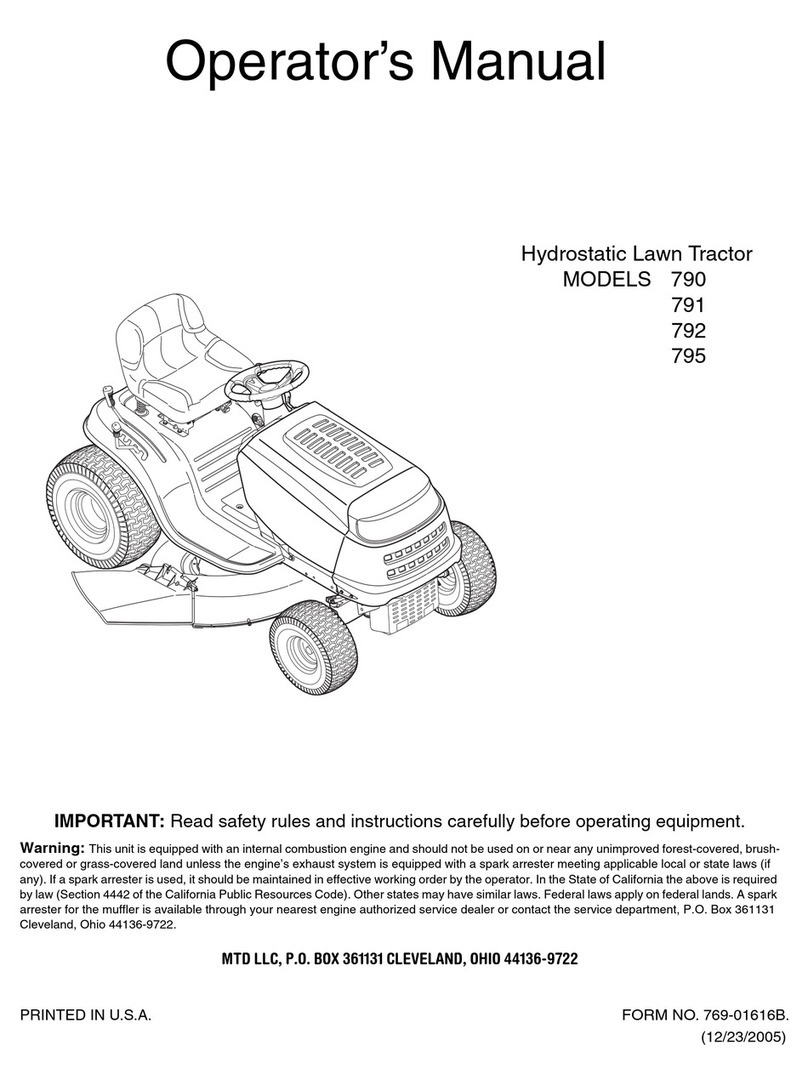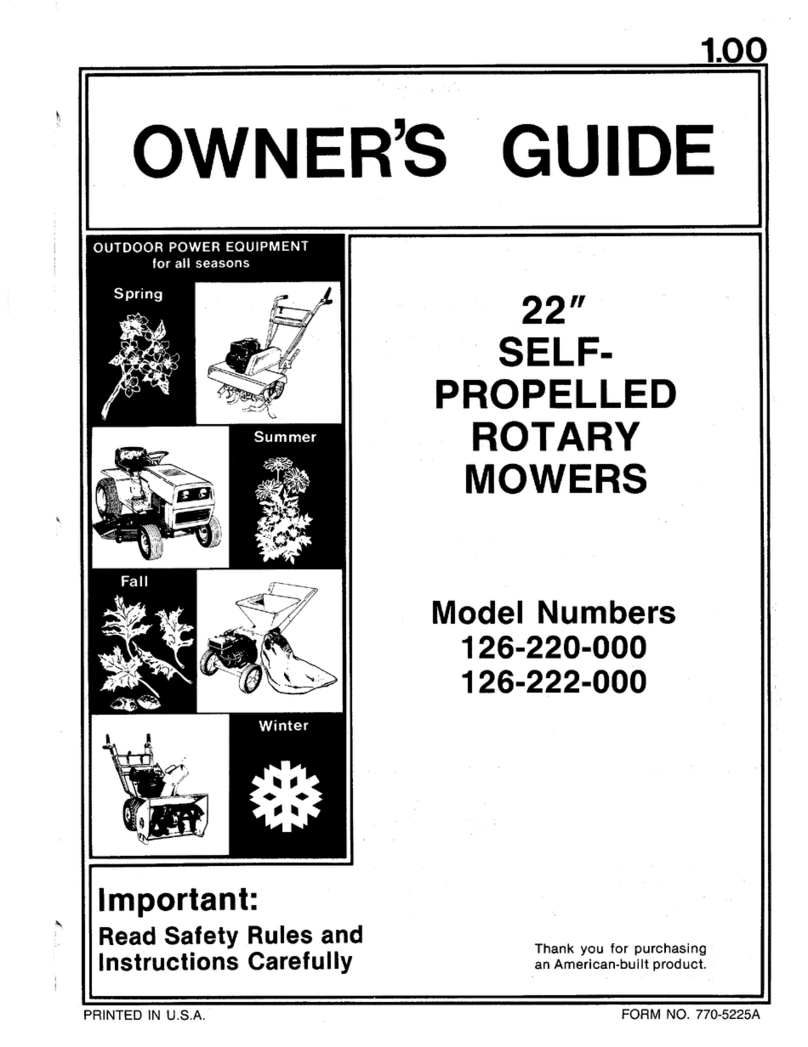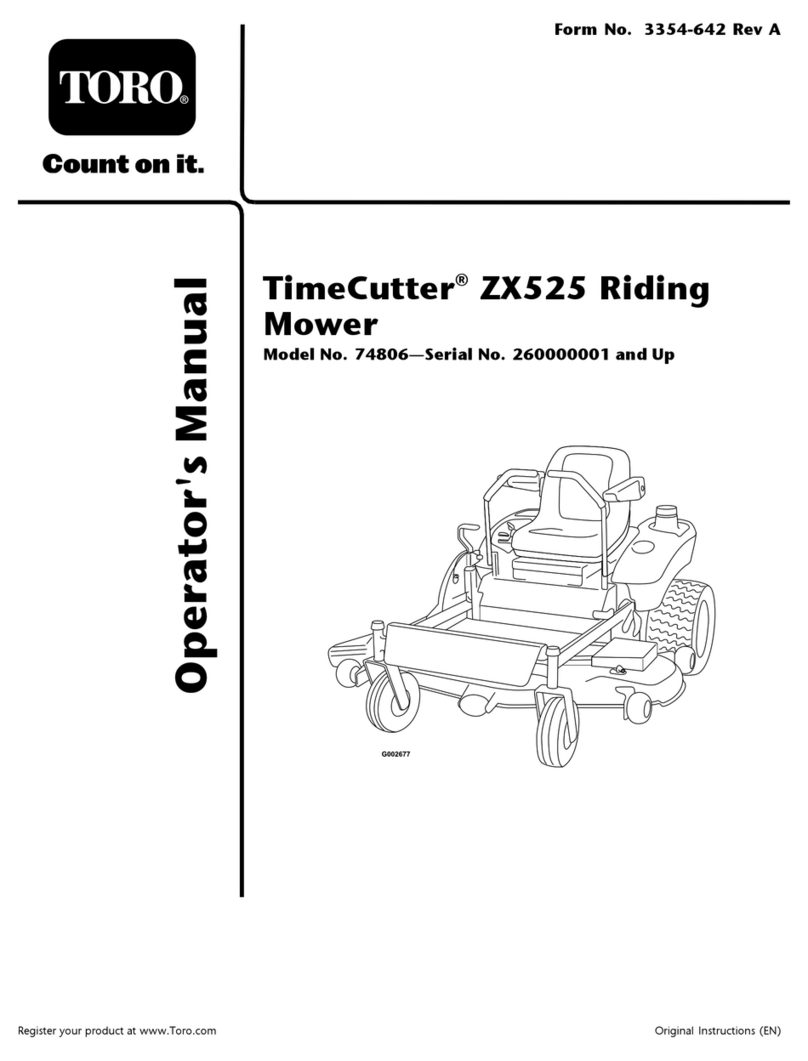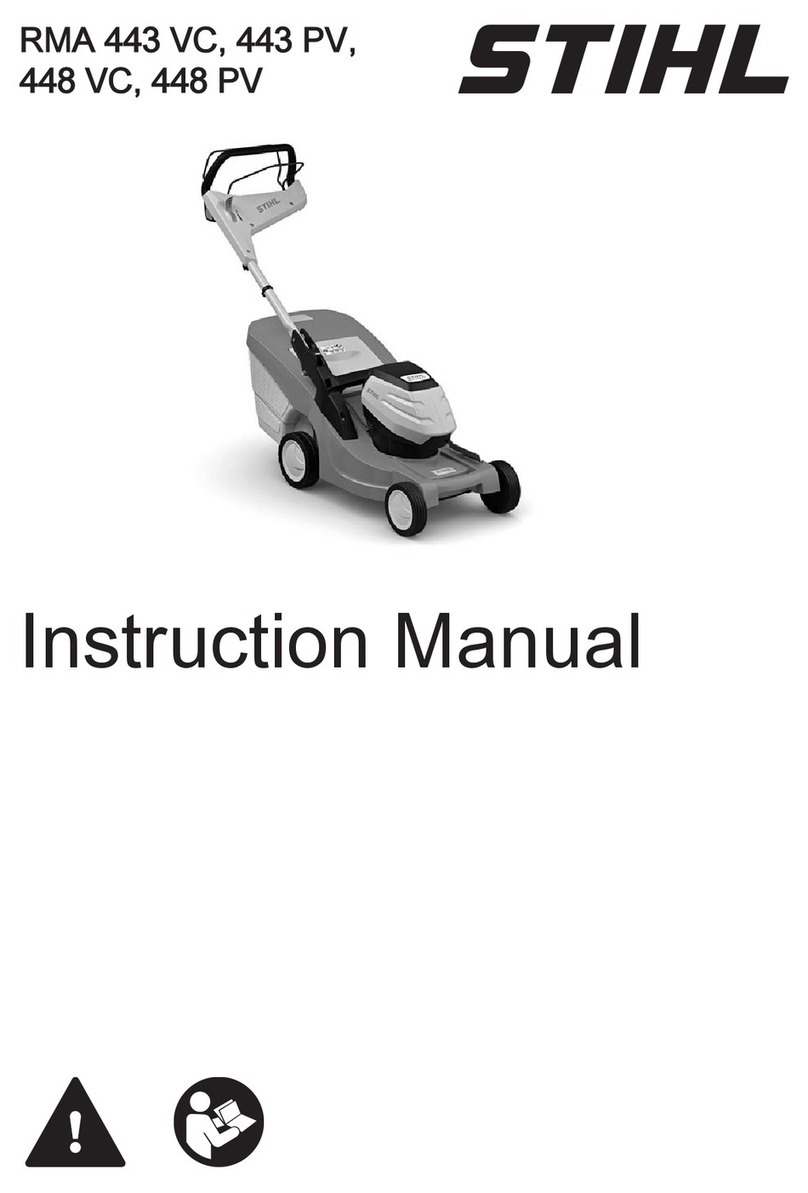
OVERSEEDER/POWER RAKE Owner’s Manual
Part No 350517 350517_-_HI
RAKING OPERATION-SPRING REEL (See Fig. 5)
NOTE:Must have the spring tine reel assembly (350354) for this operation.
SET DEPTH: With engine off, set the raking depth so that the spring tines are just above touching the
flat surface (i.e. driveway, or sidewalk) the units height is being adjusted on. NOTE: Allowing the
spring tines to have substantial contact with the ground will cause premature wear and failure of the
spring tines.
ENGAGE TINES: Pull back on the bail on the operators handle. NOTE: When engaging the spring
tines in heavy load conditions (i.e. heavy thatch, or very uneven turf), push down on the operators
handle lifting the front wheels slightly. Engage the spring tines. Slowly lower the unit into the turf.
RAKE: Rake a small test area and examine the results. Thatch should be removed and deposited on
top of the healthy grass. If excessive damage occurs to healthy grass, adjust the spring tine depth to
decrease damage. Continue raking the yard, working in one direction (i.e. north-south, or east-west).
NOTE: If a large drop in engine RPM occurs, or the unit pulls you forward and bounces during
operation the spring tine depth is set too low.
REMOVE THATCH:After raking, a layer of thatch will be deposited over the top of the lawn. This
thatch must be removed prior to any fertilizing, seeding, or watering of the lawn. We suggest the use
of a lawn vacuum or wheeled blower for collection and removal of the thatch.
VERTI-CUTTING OPERATION (See Fig. 6)
NOTE:Must have the slicing reel assembly (350602) for this operation.
SET DEPTH: With engine off, set the raking depth so that the blades just touch on a flat surface
(i.e. driveway, or sidewalk).
ENGAGE BLADES: Pull back on the bail on the operators handle. NOTE: When engaging the
blades in heavy load conditions (i.e. heavy thatch, or very uneven turf), push down on the
operators handle lifting the front wheels slightly. Engage the blades. Slowly lower the unit into the
turf.
SLICE:Verti-cut a small test area and examine the results. Some thatch and cut stems should be
removed and deposited on top of the healthy grass. Grass runners should be cut and ready for
removal. If excessive damage occurs to healthy grass, adjust the blade depth to decrease
damage. Continue raking the yard, working in one direction (i.e. north-south, or east-west). NOTE:
If a large drop in engine RPM occurs, or the unit pulls you forward and bounces during operation
the blade depth is set too low.
REMOVE THATCH/STEMS:After verti-cutting, a layer of thatch and cut stems will be deposited
over the top of the lawn. We suggest the use of a lawn vacuum or wheeled blower for collection
and removal of the thatch/stems.
NOTE:Must have the slicing reel assembly (350602) for this operation.
DRY: Be sure grass is dry. Wet conditions can cause increased damage to healthy grass.
SEED: Spread grass seed according to the seed suppliers directions (e.g. 10 lbs. per 1000 ft2[4.5 kg. per 93 m2])
SET DEPTH: With engine off, set the raking depth so that the blades reach 1/4"-1/2"(6-12 mm) below a flat surface (i.e. driveway,
or sidewalk).
ENGAGE CLUTCH:Pull back on the bail on the operators handle. NOTE: When engaging the clutch in heavy load conditions (i.e.
heavy thatch, or very uneven turf), push down on the operators handle lifting the front wheels slightly. Engage the clutch. Slowly
lower the unit into the turf.
SLICE:Run machine over the area that has been seeded to incorporate the seed into the soil. If excessive damage occurs to
healthy grass, adjust the blade depth to decrease damage. Continue raking the yard, working in one direction (i.e. north-south, or
east-west). NOTE: If a large drop in engine RPM occurs, or the unit pulls you forward and bounces during operation the blade
depth is set too low.
WATER/FERTILIZE: After the seed has been worked into the soil, water and fertilize according to the seed suppliers directions.
